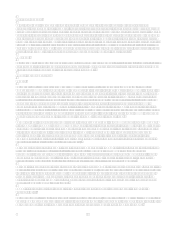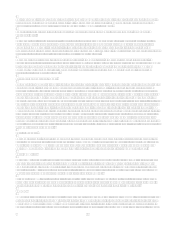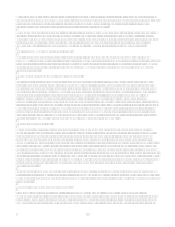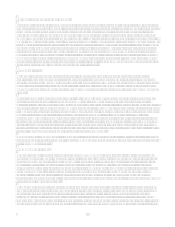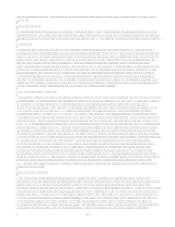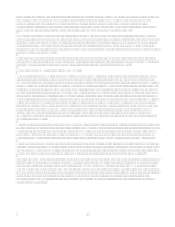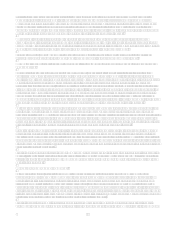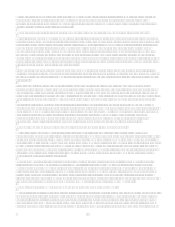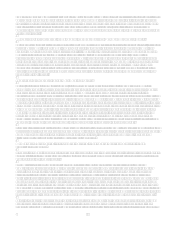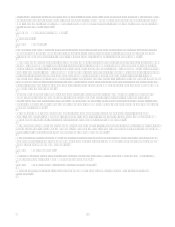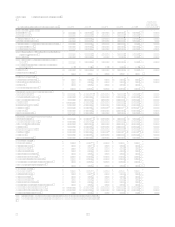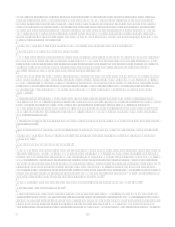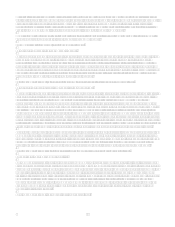Capital One 2006 Annual Report Download - page 38
Download and view the complete annual report
Please find page 38 of the 2006 Capital One annual report below. You can navigate through the pages in the report by either clicking on the pages listed below, or by using the keyword search tool below to find specific information within the annual report. 20
interest rates we charge on our earning assets fall more quickly than the rates we pay on our borrowings and deposits.
Changes in interest rates and competitor responses to those changes may affect the rate of customer pre-payments for
mortgages and auto and other term loans and may affect the balances customers carry on their credit cards. These changes
can reduce the overall yield on our earning asset portfolio. Changes in interest rates and competitor responses to these
changes may also impact customer decisions to maintain balances in the deposit accounts they have with us. These changes
may require us to replace withdrawn balances with higher cost alternative sources of funding.
We assess our interest rate risk by estimating the effect on our earnings under various scenarios that differ based on
assumptions about the direction and the magnitude of interest rate changes. We take risk mitigation actions based on those
assessments. We face the risk that changes in interest rates could reduce our net interest income and our earnings in material
amounts, especially if actual conditions turn out to be materially different than those we assumed.
See pages 51-58 in Item 7 Managements Discussion and Analysis of Financial Condition and Results of Operations
Interest Rate Risk contained in this Annual Report on Form 10-K for the year ended December 31, 2006.
We May Fail To Realize All of the Anticipated Benefits of our Mergers with Hibernia Corporation and North Fork
Bancorporation
The success of our mergers with Hibernia and North Fork will depend, in part, on our ability to realize the anticipated
benefits from combining the businesses of Capital One, Hibernia and North Fork. However, to realize these anticipated
benefits, we must successfully combine these businesses. While we have successfully completed the integration of Hibernia,
we are in the early stages of the North Fork integration. If we are not able to achieve the objectives of the North Fork
integration, the anticipated benefits of the mergers, such as cost savings and other synergies, may not be realized fully or at
all or may take longer to realize than expected. In addition, it is possible that the ongoing integration process could result in
the loss of key employees, the disruption of each companys ongoing businesses or inconsistencies in standards, controls,
procedures and policies that adversely affect our ability to maintain relationships with clients, customers, depositors and
employees or to achieve the anticipated benefits of the mergers. Integration efforts also will divert management attention and
resources. These integration matters could have an adverse effect on Capital One during such transition period.
Our recent acquisitions also involve our entry into new businesses and new geographic or other markets which present risks
resulting from our relative inexperience in these new areas and these new businesses. Historically, our business has not
focused on retail and commercial banking. These new businesses change the overall character of our consolidated portfolio of
businesses and react differently to economic and other external factors. While we have senior managers with experience in
the banking industry, we may not be able to retain our experienced banking personnel to develop such expertise internally or
to recruit it externally. If we are unable to retain or develop such personnel, our business will suffer.
In addition, as with many integration efforts, the integrations of Hibernia and North Fork face the challenges of combining
the cultural and historical identities of institutions that previously operated independently. Particularly with respect to the
acquisition of North Fork, we face the risk that we will not be able to successfully integrate their commercial and local retail
lending cultures with our national scale lending culture. Furthermore, we may be unable to appreciate the cultural factors that
drive these new businesses. If we are unable to successfully adapt our unique cultural perspectives, our integration efforts and
our overall business could suffer.
Finally, North Fork entered into an informal memorandum of understanding with the bank regulatory authorities pursuant to
which it is required to take certain actions regarding its anti-money laundering compliance program. We are responsible for
fulfilling the obligations of this informal memorandum of understanding, which may be more costly or take more time than
we initially anticipated.
We Face Risk From Economic Downturns
Delinquencies and credit losses in the consumer finance industry generally increase during economic downturns or
recessions. Likewise, consumer demand may decline during an economic downturn or recession. In the United States, we
face the risk that the effects of higher interest rates, higher energy costs and pressure on housing prices may place added
strain on consumers ability to make purchases and repay their loans. Accordingly, an economic downturn in the United
States (either local or national), can hurt our financial performance as accountholders default on their loans or, in the case of
credit card accounts, carry lower balances and reduce credit card purchase activity. Furthermore, because our business model
is to lend across the credit spectrum, we make loans to lower credit quality customers. These customers generally have higher
rates of charge-offs and delinquencies than do higher credit quality customers.
Finally, the credit environment in certain geographic areas may continue to worsen, which also could hurt our financial
performance. Although we are geographically diversified, we have concentrations of our commercial loans in the New York



